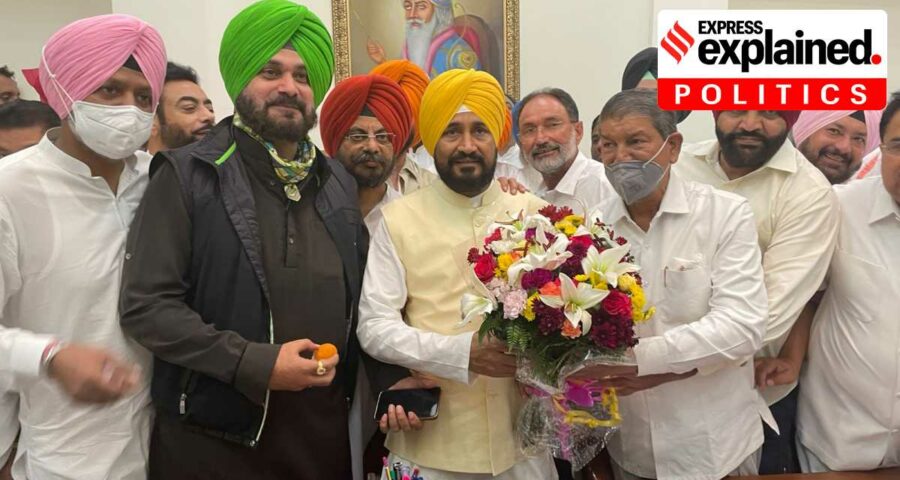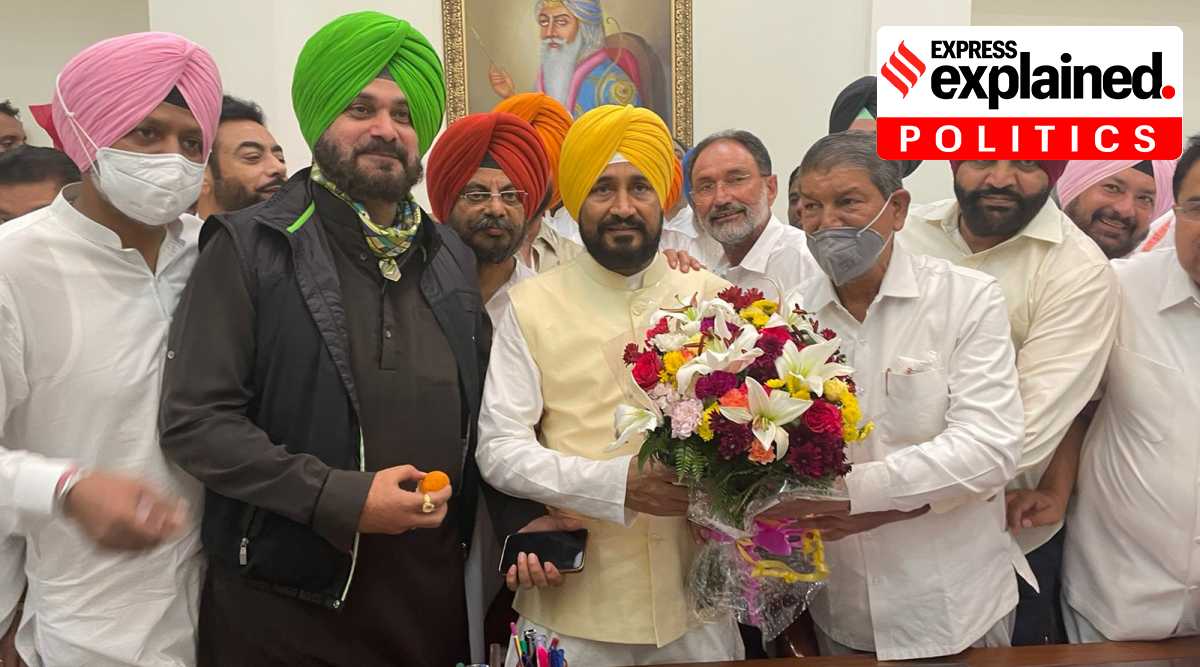Picking a Dalit over the claims of a Hindu leader — Sunil Jakhar — and at least two Jat Sikhs — Navjot Singh Sidhu and Sukhjinder Singh Randhawa — may have ensured the Congress will retain the advantage in the battle for Punjab's Dalit vote. Here's what the numbers suggest.
Written by Sanjay Kumar
After the resignation of Captain Amarinder Singh as Chief Minister of Punjab, the Congress on Sunday (September 19) chose Charanjit Singh Channi over various other leaders as the first Dalit Chief Minister of the state.
It is claimed that Channi was the unanimous choice of the party — which may be true, but it still cannot be denied that he was picked as Punjab’s first Dalit Chief Minister with an eye on the sizeable Dalit vote in the state.
As per the estimates of the 2011 Census, Dalits constitute 32% of the total population of Punjab, and a third among them are Dalit Sikhs.
The importance of Dalit vote in Punjab can be assessed from the fact that there are 54 Assembly constituencies in which Dalits constitute more than 30% of the total voters. There are another 45 Assembly constituencies where Dalits constitute between 20% and 30% of total voters.
In the contest among the Congress, Shiromani Akali Dal (SAD)-Bahujan Samaj Party (BSP) alliance, and Aam Adami Party (AAP), one third of votes of any one community is going to play a significant role in ensuring victory or defeat of any political party.
Table 1: Constituency wise concentration of Dalit vote
Source: CSDS Data Unit
Table 2: Region wise concentration of Dalit vote
Source: CSDS Data Unit
The significant numbers of Dalits is the reason why, over the last few months, all political parties have made attempts to mobilise them on their side.
One way or the other, all political parties have indicated they would give a decent share in power to Dalits if they are voted to power.
AAP has promised to appoint a Dalit deputy chief minister, and the SAD has gone into an alliance with the BSP in its effort to woo Dalits. The resignation of Amarinder opened up an opportunity for the Congress to appoint a new chief minister, and by picking Channi, it has trumped its two rival parties. It is difficult to say at the moment which party will attract the most Dalit votes, but many believe this to be the masterstroke of the Congress party.
Results of the past few elections suggest that no particular party has done significantly better in Dalit reserved constituencies compared to the non-Dalit constituencies.
In the 2017 Assembly elections, the Congress won 21 out of 34 Dalit reserved constituencies, but its vote share in Dalit reserved constituencies was slightly lower compared to its overall average vote share.
On the other hand, even though the Congress’s vote share was the same in both Dalit reserved and non-Dalit constituencies, it won fewer Dalit reserved seats.
In 2012, the Congress won only 10 out of the 34 Dalit reserved seats.
Clearly, the overall performance of the party in reserved and non-reserved constituencies does not help us understand how Dalits voted in previous Punjab elections.
Table 3: Punjab Assembly Election 2012-Reserved Category wise result
Source: CSDS Data Unit
Table 4: Punjab Assembly Election 2017-Reserved Category wise result
Source: CSDS Data Unit
But evidence from surveys conducted by the Centre for the Study of Developing Societies (CSDS) indicates that the Congress has, in the past, successfully managed to moblise both Hindu Dalit and Sikh Dalit votes. To be able to win the 2022 elections and return to power, the party needs to maintain its hold over Dalits.
Evidence suggests that the Congress has been the popular choice of both Dalit Sikhs and Dalit Hindus, though in somewhat different proportions. Having entered into an alliance with the BSP, the SAD had been eying the Dalit vote, but the appointment of Channi is likely to allow the Congress to make a significant dent in the SAD’s Sikh Dalit votebank.
Newsletter | Click to get the day’s best explainers in your inbox
It is important to note that the Congress recently appointed the Dalit leader Sukhwinder Singh ‘Danny’ Bandala as one of the four working presidents of the party in the state. Having a Dalit Sikh as Chief Minister and another Dalit leader in an important position, is likely to impact the way Dalits vote in the elections next year.
Table 5: Congress already has an advantage over the SAD amongst Dalit voters
Source: Punjab Assembly Election Studies 2002, 2007, 2012 & 2017, CSDS Data Unit
It is also important to note the evidence that suggests that, compared to the SAD, the Congress is more popular among Hindu Dalits. The Dalit Hindus of Punjab have voted for the Congress in bigger numbers compared to the Akalis in the last few elections.
The entry of the AAP, and the fact that the BJP is contesting on its own, may potentially impact the Congress Hindu votebank to some extent — however, having a Dalit Chief Minister could help the party mitigate this impact and keep the Hindu Dalit vote intact.
Table 6: Non Dalit Hindu vote in Punjab
Vote share
Source: Punjab Assembly Election Studies 2002, 2007, 2012 & 2017, CSDS Data Unit
Source: Read Full Article



